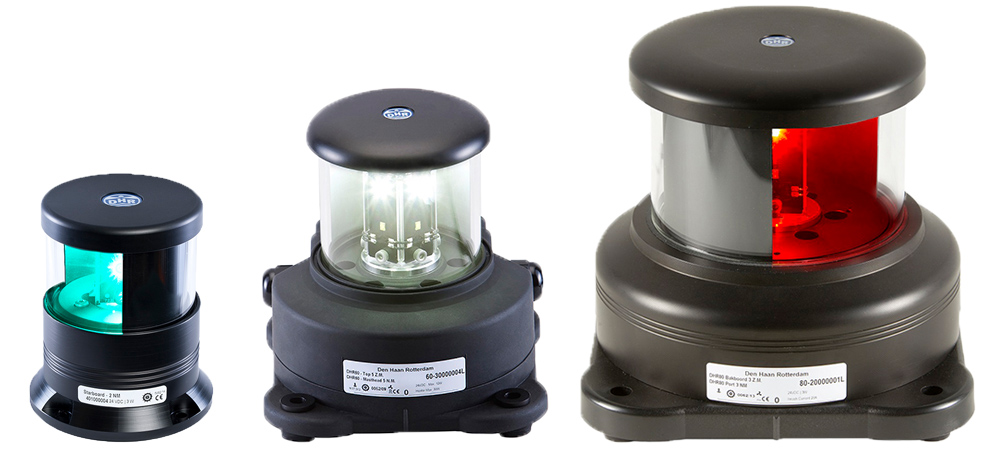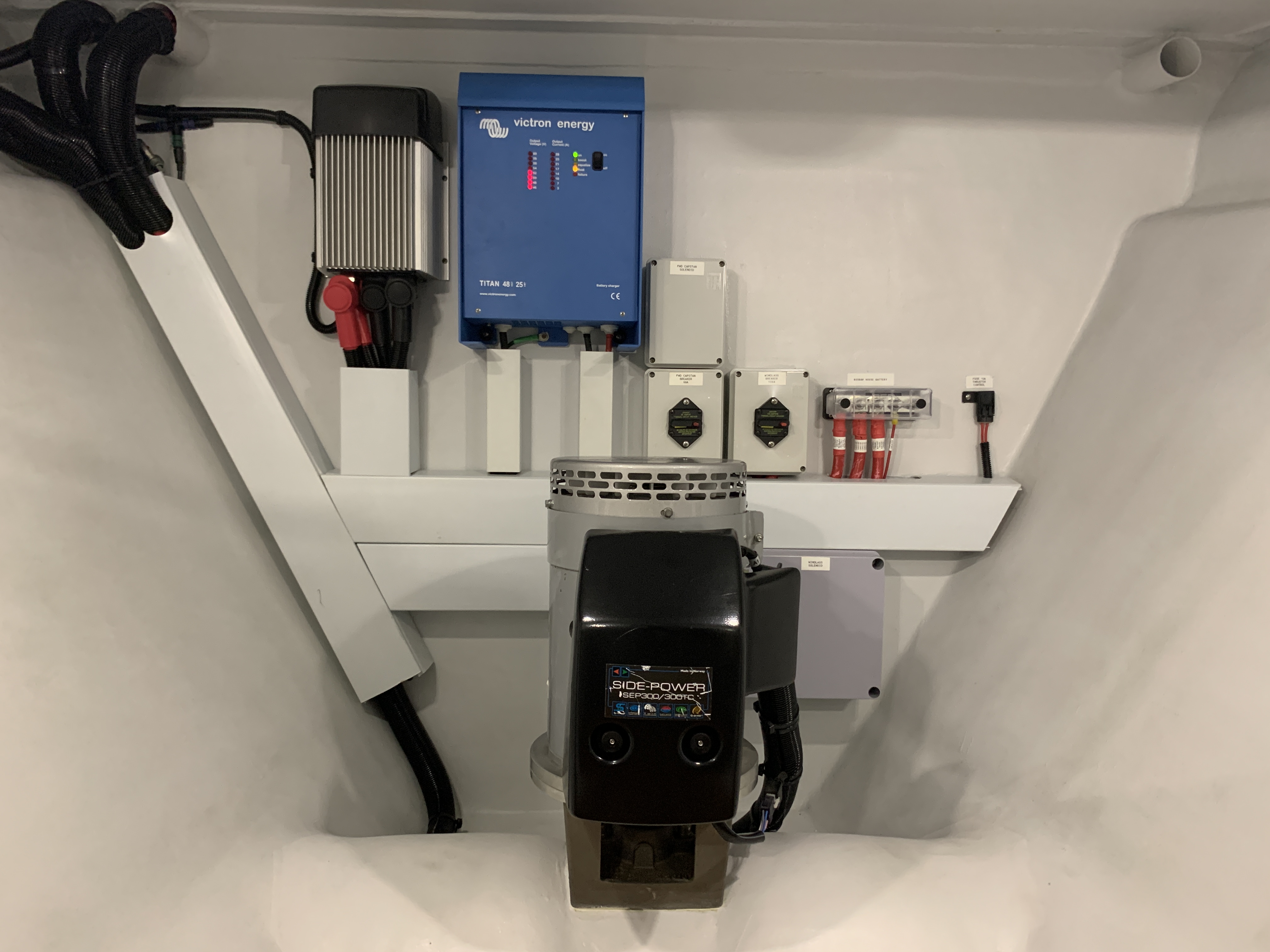If you live in a climate that requires you to haul and stow your boat for the winter months, the turning of the weather in the spring is the best time of the year. The temptation to rip the cover off the boat and drop it in the water on that first warm, sunny day is strong, but it’s important to get your boat ready for the season first! Sitting on dry land in below-freezing temperatures is not what boats were made for, so making sure everything is in working order after being stored for winter is always a good idea.
Properly de-winterizing your boat ensures that every system, from the engine and batteries to the bilge and freshwater lines, returns to peak condition after months of inactivity. Taking the time to complete a thorough inspection now can prevent costly damage, extend the life of your equipment, and help you launch with confidence when the season begins.
Key Takeaways
- Taking time to de-winterize your boat properly sets you up for a smooth, stress-free start to the season.
- Give your engine, battery, and bilge pump a quick check so you’re not stuck troubleshooting on day one.
- Look over hoses, cables, and safety gear to catch any wear or expired items before you launch.
- Tailor your de-winterizing checklist to your specific boat type — inboard, outboard, or stern drive — for the best results.
Boat Dewinterizing Checklist
Before launching for the season, use this checklist to inspect, clean, and test each major system on your boat.
1. Remove and Clean the Cover
- Take off the boat’s cover, tarp, or shrink wrap.
- Inspect for dirt, moisture, or mold and clean lockers, drawers, and compartments.
2. Check the Engine & Cooling System
- Follow the manufacturer’s maintenance schedule for oil and filter changes.
- Look for leaks, corrosion, or worn belts.
- Connect the cooling intake to a water source and run the engine briefly to confirm operation.
3. Check, Clean, or Replace the Battery
- Test voltage and recharge if needed.
- Check under load to verify charge retention.
- Clean corrosion from terminals before reconnecting cables.
4. Test the Bilge Pump
- Turn on the pump and ensure it removes water when activated manually.
5. Flush Water Pumps & Fresh Water Tanks
- Confirm water pumps work properly.
- Flush antifreeze or stagnant water from tanks and hoses.
6. Inspect Steering
- Turn the wheel fully in both directions to ensure smooth movement.
- For hydraulic steering, check fluid levels and functionality.
7. Check Safety Gear and Navigation Lights
- Return life jackets, flares, and fire extinguishers to the boat.
- Confirm expiration dates and replace if necessary.
- Turn on navigation lights to ensure they operate correctly.
8. Inspect Cables and Hoses
- Look for cracks, fraying, or signs of animal damage.
9. Replace Anodes
- Replace zinc, aluminum, or magnesium anodes on engines, rudders, or thrusters.
10. Reattach Electronics and Accessories
- Reconnect devices such as displays, windlasses, or bow thrusters and test them.
11. Polish and Wax
- Clean and polish paint or gelcoat to protect fiberglass and extend finish life.
12. Check the Trailer (if applicable)
- Inspect lights, brakes, and wheel bearings.
- Verify the trailer connects and functions properly with your vehicle.
How Much Does It Cost to De-winterize a Boat?
If nothing is in need of being repaired or replaced, most of the cost will come from doing annual motor maintenance (filters, oil, seals, etc.) and bottom paint. The cost of both those will vary greatly depending on the size of the boat and the type of engine as well as which type of bottom paint you use. Otherwise it will cost you only some of your time and basic cleaning supplies. 
How to De-winterize a Boat
Remove the Boat Cover or Wrap, Inspect, and Clean
Whether your boat has been stored in a cover, under a tarp, shrink wrapped, or uncovered indoors, it will always get dirty in the winter. If there’s moisture inside the cover or wrap, it’s also quite likely that you’ll find the beginnings of mold growth, so be sure to check and clean all the lockers, drawers and other nooks.
Check the Engine & Cooling System
Every type of engine from every brand has a recommended maintenance schedule, so be sure to consult the operator’s manual and keep up with recommended services like oil changes, filter changes, and so on. Beyond the recommended maintenance, do a visual inspection to look for things like worn belts, leaks and corrosion. If all looks well, hook up the colling intake to a water source, put water through it and run the engine to make sure it’s operating properly.
Check, Clean, or Replace Your Battery
It’s extremely common to find your batteries depleted after winter storage, so it’s always important to check them for voltage. If you do find them to be low, put a charger on them and check again. If they’re holding voltage, be sure to test them under load as well, as it’s common for worn out batteries to show a “surface charge” indicating that there’s proper voltage, but that voltage immediately drops out when put under load. If see any corrosion on the terminals, be sure to clean that up before reconnecting the cables.

Check Bilge Pump
Turn on your bilge pump to make sure it is working. This means not just hitting the switch and listening for it to come on, but actually pouring a little water in the bilge and making sure it gets pumped out.
Check Water Pumps & Flush Fresh Water Tanks
Turn on your water pumps to make sure they’re working properly. If you have a freshwater system on board, be sure to flush the tank if you put any antifreeze in there for winter. Even if you didn’t use antifreeze, it’s still a good idea to flush the tank and hoses of the water that sat stagnant for months.
Check Steering
Turn the wheel stop-to-stop to ensure the steering is functioning smoothly. If you have power steering, make sure it powers up and functions properly. If you have hydraulic steering make sure the system has enough hydraulic fluid and that it has been
Check Safety Gear and Navigational Lights
If you removed any safety gear from the boat to store at home, like life preservers, flares or fire extinguishers, always make sure to put it back on board before launching for the season. In the case of flares and fire extinguishers, be sure they’re not expired and purchase new ones if they are. It's also a good idea to turn the navigation lights on and make sure they're all working properly.

Check Cables and Hoses
Always be sure to inspect all the cables and hoses aboard to boat to ensure there’s no cracking or fraying, and that no critters found their way aboard and chewed through anything.
Repaint the Bottom of the Boat
If your boat lives in the water, you’ll need ablative bottom paint to prevent marine growth on the underside of the hull. Depending on the type of paint you use and how long the boat spends in the water, you may not have to do this every year, but in most cases, ablative bottom paint will perform best with a fresh coat every year.
Replace Anodes
Regardless of whether the anodes on your boat are zinc, aluminum or magnesium, they should be replaced at least once annually. Doing it with the boat out of the water is always easier, so be sure to change all the anodes your boat has, whether that’s on the engine, rudder, bow thruster or anywhere else.
Reattach Electronics and Accessories
If you’ve disconnected anything from its power source for the winter, like your multi-function display, bow thruster, windlass, etc. be sure it’s reconnected and turns on before launching.

Polish and Wax
Give your boat some shine before it goes back in the water! Beyond just looking better, taking good care of your boat’s paintjob or gelcoat will extend the lifespan of the paint or gelcoat, and protect the fiberglass underneath.
Check the Trailer
If your boat is trailered, make sure the trailer is in good condition. Hook it up to your vehicle and make sure all the lights work, the brakes work and the wheels are greased.
Dewinterizing Different Boat Types
While the general steps for de-winterizing apply to most boats, the process can vary depending on your propulsion system. Inboards, outboards, and stern drives each have unique components and maintenance needs, so it’s important to understand the distinctions before you begin.
Inboard Engines
Inboard boats have engines mounted inside the hull, using a closed or raw-water cooling system. When de-winterizing, check that all drain plugs and cooling hoses are properly reconnected and that any antifreeze used during winterization has been flushed out. Inspect the raw-water impeller for signs of wear and confirm that the exhaust system is free of obstructions. Because these systems are enclosed, inboards typically require more attention to hose clamps, coolant levels, and corrosion prevention.
Outboard Engines
Outboard motors are more accessible, but still benefit from a careful inspection before starting the season. Flush the cooling system thoroughly, replace spark plugs if needed, and inspect the lower unit oil for signs of water intrusion or contamination. Verify that the fuel line and primer bulb are free of cracks, and make sure the propeller is secure and free of damage. After reconnecting the battery, start the engine briefly using a water supply to confirm smooth operation.
Stern Drives (Inboard/Outboard)
Stern drives combine elements of both systems, so they require checks above and below the transom. Make sure the drive unit was properly drained during winterization and refill or replace the gear oil as needed. Lubricate all moving parts (especially steering and tilt mechanisms) and verify that the bellows are intact with no signs of cracking. Since stern drives are partly submerged when in use, this inspection helps prevent water intrusion and mechanical wear once the boat is back in service.
Final Thoughts
All these tips are general guidelines for de-winterizing a boat and they apply to the vast majority of boats. However, it’s always a good idea to make a winterizing and subsequent de-winterizing checklist that is specific to your boat, the equipment you have on board and how you store it for winter. For more maintenance and troubleshooting guides, continue reading here!
LED Lights for your Boat FAQs
When should I de-winterize my boat?
Aim for early spring once overnight temps stay above freezing so you can inspect systems and address issues before launch. For seasonal timing context, see Imtra’s winterization overview.
Related: Winterizing your Boat
Is there a step-by-step checklist I can follow?
Yes. Imtra’s de-winterizing guide walks through the process from removing covers and checking engines to testing pumps and lights. It’s a solid companion to your own checklist.
Do I need to replace sacrificial anodes every season?
Typically, yes. Checking/replacing zinc, aluminum, or magnesium anodes annually (and whenever they’re half-gone) helps prevent corrosion of underwater metals. Imtra’s anode catalog is a good reference for options, and their fall haul-out guide reinforces seasonal maintenance planning.
Related: Anodes
How should I check my lighting and electrical before launch?
Test all navigation, deck, and interior lights; confirm wiring and switches; and consider LED upgrades for efficiency and durability. Imtra’s “boat lights” articles provide additional planning tips.
Related: How to Choose the Right Marine LED Lights for Your Boat
Is there a special way to store batteries?
Cold storage can reduce charge and expose weak batteries. Inspect terminals, recharge, and load-test so starting and electronics are reliable on day one. Imtra’s battery-maintenance hub collects relevant guidance.
Where can I find more troubleshooting help?
If you uncover issues during de-winterizing, Imtra’s Troubleshooting & Maintenance section aggregates practical how-tos across systems.